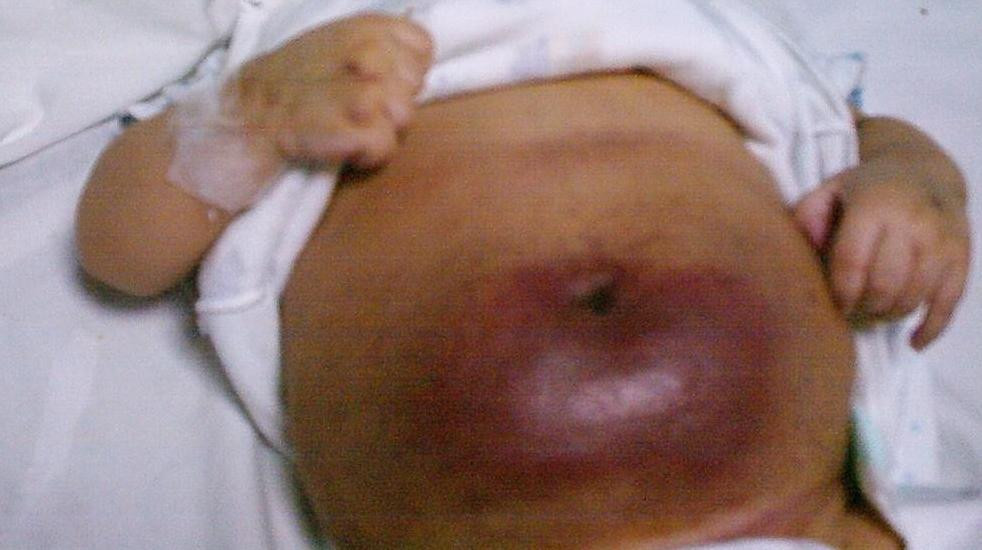- Kasabach-Merritt syndrome
Infobox_Disease
Name = PAGENAME

Caption =
DiseasesDB = 30701
ICD10 =
ICD9 = ICD9|287.39
ICDO =
OMIM = 141000
MedlinePlus =
eMedicineSubj = med
eMedicineTopic = 1221
eMedicine_mult = eMedicine2|ped|1234 | MeshID =Kasabach-Merritt syndrome (KMS) is a
rare disease , usually ofinfant s, in which avascular tumor leads to decreasedplatelet counts and sometimes other bleeding problems,cite journal
author=Hall G
title=Kasabach-Merritt syndrome: pathogenesis and management
journal=Br J Haematol
volume=112
issue=4
pages=851–62
year=2001
pmid=11298580
doi=10.1046/j.1365-2141.2001.02453.x] which can be life-threatening.cite journal
author=Shim W
title=Hemangiomas of infancy complicated by thrombocytopenia
journal=Am J Surg
volume=116
issue=6
pages=896–906
year=1968
pmid=4881491
doi=10.1016/0002-9610(68)90462-5] It is also known as hemangioma thrombocytopenia syndrome. It carries the names of Dr Haig Haigouni Kasabach and Dr Katharine Krom Merritt, the two pediatricians who first described the condition in 1940. [cite journal | author=Kasabach HH, Merritt KK | title=Capillary hemangioma with extensive purpura: report of a case | journal=Am J Dis Child | year=1940 | volume=59 | pages=1063] [WhoNamedIt|synd|3861|Kasabach-Merritt syndrome]Pathophysiology
KMS is usually caused by a
hemangioendothelioma or othervascular tumor , often present at birth.cite journal
author=Enjolras O, Wassef M, Mazoyer E, Frieden I, Rieu P, Drouet L, Taïeb A, Stalder J, Escande J
title=Infants with Kasabach-Merritt syndrome do not have "true" hemangiomas
journal=J Pediatr
volume=130
issue=4
pages=631–40
year=1997
pmid=9108863
doi=10.1016/S0022-3476(97)70249-X] cite journal
author=el-Dessouky M, Azmy A, Raine P, Young D
title=Kasabach-Merritt syndrome
journal=J Pediatr Surg
volume=23
issue=2
pages=109–11
year=1988
pmid=3278084
doi=10.1016/S0022-3468(88)80135-0] Although these tumors are relatively common, it is rare for them to cause KMS.When these tumors are large or are growing rapidly, sometimes they can trap
platelet s, causing severethrombocytopenia . The combination of vascular tumor and consumptive thrombocytopenia defines KMS. Tumors can be found in the trunk, upper and lower extremities, retroperioneum, and in the cervical and facial areas.This
consumptive coagulopathy also uses upclotting factors , such asfibrinogen which may worsen bleeding. The coagulopathy can progress todisseminated intravascular coagulation and even death.Diagnostic workup
The diagnostic workupcite web
last =Krafchik
first =Bernice R
date =2005-12-19
url =http://www.emedicine.com/MED/topic1221.htm
title =Kasabach-Merritt Syndrome
work =eMedicine - Hematology
publisher =WebMD
accessdate =2006-05-15] is directed by the presenting signs and symptoms, and can involve:
*blood counts, clotting studies, and other laboratory testing
*imaging tests (ultrasound,CT scan ,MRI , sometimesangiography , and rarelynuclear medicine scans)
*biopsy of the tumor.Patients uniformly show severe thrombocytopenia, low
fibrinogen levels, highfibrin degradation products (due tofibrinolysis ), and microangiopathic hemolysis.Management
Management of KMS, particularly in severe cases, can be complex and require the joint effort of multiple subspecialists. This is a rare disease with no consensus treatment guidelines or large
randomized controlled trial s to guide therapy.upportive care
Patients with KMS can be extremely ill and may need
intensive care . They are at risk of bleeding complications includingintracranial hemorrhage . The thrombocytopenia and coagulopathy are managed with platelet transfusions andfresh frozen plasma , although caution is needed due to the risk offluid overload andheart failure from multiple transfusions. The possibility ofdisseminated intravascular coagulation , a dangerous and difficult-to-manage condition, is concerning.Anticoagulant and antiplatelet medications can be used after careful assessment of the risks and benefits.Definitive treatment
Generally, treatment of the underlying vascular tumor results in resolution of KMS. If complete
surgical resection is feasible, it provides a good opportunity for cure (although it can be dangerous to operate on a vascular tumor in a patient prone to bleeding, even with appropriate surgical subspecialists involved).If surgery is not possible, various other techniques can be used to control the tumor::*
embolization (byinterventional radiology ) can limit the tumor's blood supply:*externalcompression bandage s can have similar effects:*certain medications, including::**corticosteroid s:**alpha-interferon :**chemotherapy (e.g.vincristine ):*radiation therapy has been used, often successfully, but now is avoided whenever possible due to the risk of long-term adverse effects (e.g. risk for future cancer).Outcomes
KMS has a mortality rate of about 30%. For patients that survive the acute disease, supportive care may be required through a gradual recovery.
Furthermore, patients may need care from a
dermatologist orplastic surgeon for residual cosmetic lesions. On long-term followup, most patients have skin discoloration and/or mild disfiguration from the dormant tumor.cite journal
author=Enjolras O, Mulliken J, Wassef M, Frieden I, Rieu P, Burrows P, Salhi A, Léauté-Labrèze C, Kozakewich H
title=Residual lesions after Kasabach-Merritt phenomenon in 41 patients
journal=J Am Acad Dermatol
volume=42
issue=2 Pt 1
pages=225–35
year=2000
pmid=10642677
doi=10.1016/S0190-9622(00)90130-0]References
Wikimedia Foundation. 2010.
